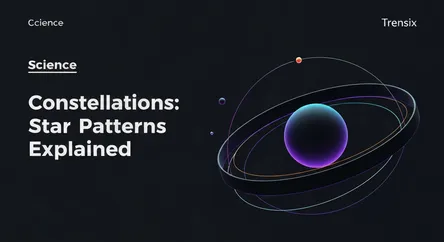Science
Constellations: Star Patterns Explained

Discover constellations, the star patterns that have guided and inspired humanity for millennia. Learn what they are and why we still look to the stars.
What is it?
A constellation is a group of stars that forms an imaginary outline or pattern on the celestial sphere, typically representing an animal, mythological figure, or an object. While the stars in a constellation may appear close together from our perspective on Earth, they are often vast distances apart in space. The International Astronomical Union (IAU) officially recognizes 88 constellations that together map out the entire night sky. These recognizable patterns have served as a celestial calendar and navigational guide for centuries.
Why is it trending?
Interest in constellations perpetually trends due to the growth of amateur astronomy and astrophotography, which have become more accessible through smartphone apps and affordable telescopes. Pop culture, particularly astrology and its focus on the zodiac, consistently keeps these star patterns in the public consciousness. Additionally, major astronomical events or discoveries from observatories like the James Webb Space Telescope are often reported by their location within a specific constellation, sparking renewed curiosity and searches for information about the night sky.
How does it affect people?
Historically, constellations were fundamental to human survival and culture, providing a basis for navigation, agriculture, and mythology across civilizations. Today, they serve as a powerful educational tool, acting as a gateway for many into the broader sciences of astronomy and physics. They foster a sense of wonder and connection to the cosmos, reminding people of their place in the universe. Gazing at these ancient patterns connects us to our ancestors, who looked upon the very same stars to tell stories and make sense of the world.